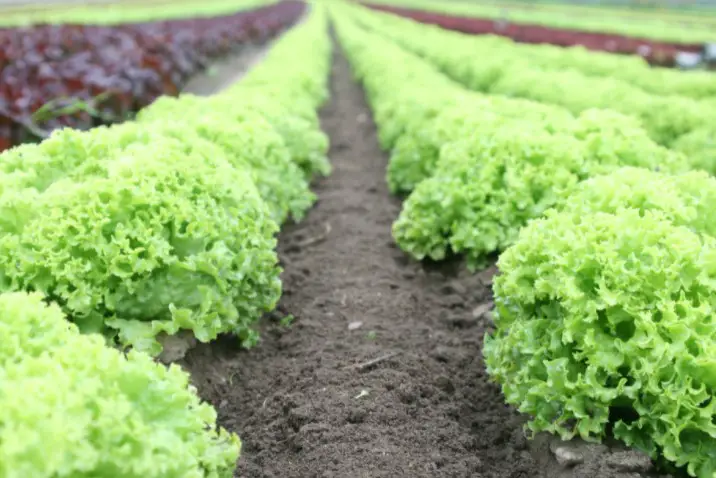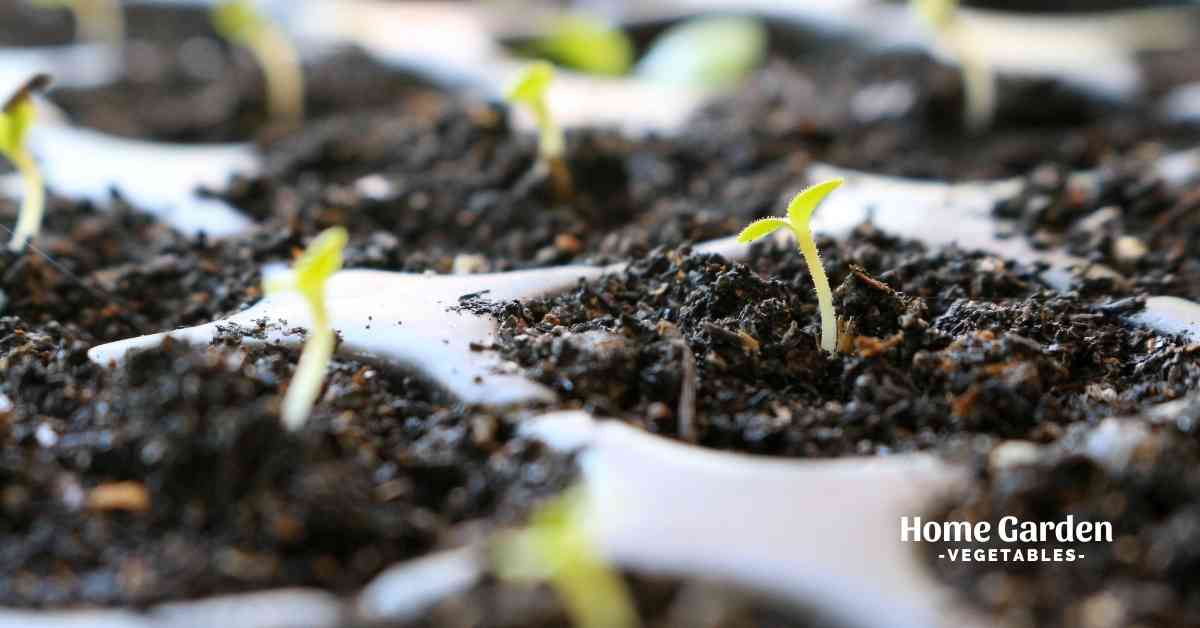Cold-season crops, such as lettuce, thrive in colder, milder climates. It’s best to start sowing them two weeks before the final spring frost. Until it becomes hot, you may keep planting. Then, in the autumn, you can restart (planting 6 to 8 weeks before the first fall frost).

As long as you keep it moist, it’s a fantastic leafy green to cultivate. Adding to its versatility, it thrives in raised beds and containers.
Reader Poll: What online courses would interest you?
Seeding lettuce is easy with these helpful hints and tactics.
When to Start Lettuce Seeds Indoors
- As soon as the ground can be handled, direct seeding in the garden is advised. Seeds should be planted 2 to 4 weeks before the final spring frost date. Seeds germinate best at temperatures between 55 and 65°F (13 to 18°C), but soil temperatures must exceed 40°F (4°C). Most seeds germinate in 7 to 10 days.
- If you want an even earlier start, seed them in a greenhouse, hoop house, or cold frame 4 to 6 weeks before your last frost date. Starting with grow lights may be the best option if it’s cloudy.
- To get the most out of your lettuce transplants, plant them as soon to your final frost-free date as possible. After the plants have been suitably hardened off, they may be planted 2 to 3 weeks sooner than if they had been started inside.
- At the beginning of the season, a temporary cloche created from bottomless milk cartons or plastic bottles may be used to aid transplants. Keep your seedlings acclimatized by putting them in these. Simply covering newly planted lettuces with a row cover or fleece may also assist.
- Every few weeks, plant a tiny amount of seeds to ensure that you have a consistent supply of leaves.
- In most places, you may sow another lettuce crop in the autumn or even in the early winter. Dates for planting may be found on our Planting Calendar.
The Process Of Finding And Preparing A Place For Planting
- For the greatest results, choose an area that gets a lot of sunlight. Lettuce will still grow even if it doesn’t receive the recommended six hours of direct sunlight each day.
- Ideally, the soil should be loose enough to allow water to pass through it, but not so loose that it becomes waterlogged.
- Work in the decomposed organic matter about a week before you plant or transplant to keep the soil healthy.
- Small seeds need a well-prepared seedbed to germinate. Germination will be hampered if there are huge stones or dirt clods in the soil.
- Weeds have an advantage over lettuce because of this. Weeds may be controlled by placing lettuce near one other.
- Several illnesses are less likely to arise if you change locales every year.
Learn How To Grow Lettuce
- It is recommended that seeds be sown 1/8 to 1/4 inch deep. Lettuce seed needs light to germinate; thus, do not plant too deeply.
- It is possible to trim seedlings when they have three to four genuine leaves.
- Before planting in the garden, transplants should have at least four to six mature leaves and a well-developed root system.
- Seeded or transplanted lettuce should be planted every 12 to 15 inches apart. Below you’ll find recommendations for several kinds of lettuce.
- Plant or thin loose-leaf lettuce to four inches apart.
- Lettuce varieties: Plant or thin to 8-inch spacing for Romaine and butterhead (Bibb, Boston).
- Plant or thin iceberg lettuce, also known as crisphead, at a distance of 16 inches apart.
- When you’re ready to transplant, give the soil a good soak.
- To keep pests at bay, place rows of chives or garlic in between your lettuce plants. Essentially, they serve as a “barrier” for the lettuce.
Assuring The Health Of Lettuce
- Fertilize three weeks after transplanting. Compost and a consistent supply of nitrogen are essential for lettuce to maintain its rapid growth. A slow-release fertilizer, such as an organic alfalfa meal, may be used instead.
- Make certain that the soil is moist, but not soggy. It’s supposed to drain just fine.
- When lettuce is thirsty, it will let you know. Just take a look at this beauty! Sprinkle the wilting leaves at any moment, even amid the day’s sweltering heat, to chill them down and slow down the pace of transpiration. To prevent the lettuce from drying out in the sun, you may also use row coverings.
- In the hotter months, an organic mulch will help save water, reduce weeds, and maintain the soil temperature at an ideal level.
- Weed by hand, but be cautious not to harm your lettuce plants’ roots, which are just a few inches deep in the ground.
Bolting
- Bolting is a typical condition that occurs as the temperature rises beyond 70 degrees Fahrenheit (20 degrees Celsius). When a lettuce plant bolts, it begins producing a central stem and seed stalk, and the leaves take on a bitter flavor.
- Cover plants with a shade cloth to keep them from bolting. It’s important to keep the plants well-watered even when temperatures rise.
- If you organize your garden such that taller plants like tomatoes or sweet corn shade lettuce, you may prevent bolting in the summer heat.
How To Pick Lettuce From The Garden
- It is best to pick lettuce when it is fully grown, but before it is fully ripe. In their youth, the leaves are most flavorful.
- Leaf lettuce may be harvested before maturity by simply plucking the outer leaves, allowing the core leaves to develop.
- To remove the outer leaves of romaine, butterhead, and loose-leaf lettuces off the plant, you may dig it up, or you can cut it about an inch above the soil. If you use the first or third procedures, you may be able to reap another crop.
- Crisphead lettuce is harvested when the core is firm.
- The leaves of mature lettuce get bitter and woody, and they spoil rapidly, so be sure to inspect your garden daily for ready-to-harvest lettuce leaves.
- Harvest lettuce first thing in the morning, before the leaves have had a chance to dry up from exposure to the sun.
- Planting fresh seeds may be more efficient than waiting for the plant to produce new leaves as time passes and the plant loses vitality.
- Lettuce may be stored in an open plastic bag for up to 10 days in the refrigerator.
- Have the lettuce leaves wilted? Put the leaves in ice-cold water for 15 minutes before straining.
Conclusion
Be mindful of the cool-season nature of lettuce and ensure that it is kept out of direct sunlight during the hottest portion of the day.
Subscribe to our newsletter!

